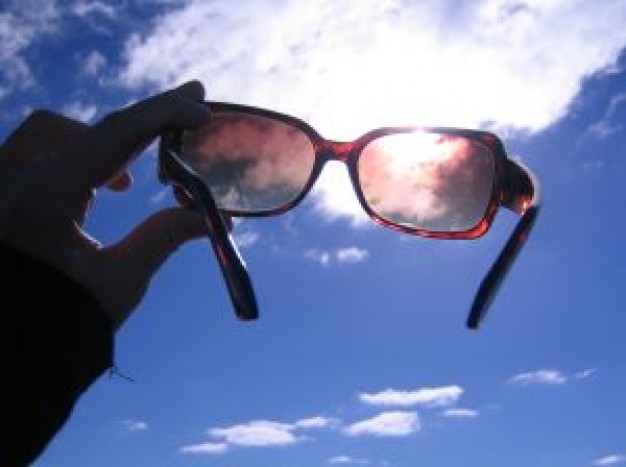"Scientists have discovered a revolutionary new treatment that makes you live longer. It enhances your…
A Review of 3 Brain Books
 March is Brain Awareness Month so the bookstore was overflowing with intriguing selections for me to take on vacation. I have a lifelong passion for brains. How do they work? What happens when they are broken? How do you get the most out of your brain? For instance, I am intrigued by the notion that many of the behavioral observations that have been made about the brain, behavior, cognition, and personality over the course of thousands of years can now be confirmed through imaging techniques such as the fMRI or the PET scan. Indeed, there is no better time than now to learn about the brain, appreciate individual differences, and to be wowed by it’s wonders.
March is Brain Awareness Month so the bookstore was overflowing with intriguing selections for me to take on vacation. I have a lifelong passion for brains. How do they work? What happens when they are broken? How do you get the most out of your brain? For instance, I am intrigued by the notion that many of the behavioral observations that have been made about the brain, behavior, cognition, and personality over the course of thousands of years can now be confirmed through imaging techniques such as the fMRI or the PET scan. Indeed, there is no better time than now to learn about the brain, appreciate individual differences, and to be wowed by it’s wonders.
The first book I read was The Edison Gene/ADHD and the Gift of the Hunter Child by Thon Hartmann (By clicking the link, you can also read the American Psychiatric Institute’s review of the book). There is ongoing controversy as to whether ADHD is a real disorder or if it is the gift of creativity and adaptability in it’s highest form. Thomas Edison, left school after only 3 months of formal education and was labeled, “a problem child, stupid and difficult” by his teachers. He set his father’s barn on fire to see what would happen. He laid on goose eggs to see if he could hatch them. His mother had to move his laboratory into the basement for fear that he would blow up the house. Of course, without Thomas Edison, there would be no light bulbs, no phonographs, and no motion pictures among other critical inventions. The author makes the case that medicating or trying to “break” the highly creative types like Edison, our society would not move forward. As I read the book, I imagined the Thomas Edison types to be intuitive- thinking-perceiving types ( ENTP and the INTP) using the Myers-Briggs terminology. Another parallel terms would be right brain thinking (holistic, random, intuitive and a “could be” focus) versus left brain thinking (linear, sequential, concrete,and a “what is” focus).
I agree with the author’s assertion that people are wired differently and are therefore more adept at various tasks. Some individuals tend to remain open to changes in incoming data and adapt accordingly while others prefer structure, organization and consistency. Neither style of thinking is superior to the other. It depends on the task at hand. I was glad to read that while the author felt that “Edison child” is often undervalued especially in traditional school settings, he also acknowledged the need for support and structure for these children. Even though Thomas Edison was booted out of school after only 3 months, his mother continued to shape and encourage him throughout his formative years. Except for the occasional political undertones in the book which detracted from the author’s central message, the book was worth the read.
The next book I read was Snoop by Sam Gosling. The general premise of this book is that you can make reasonably accurate guesses about an individual’s personality just by observing the behaviors and possessions of an individual such as how he shakes hands, where he places a tattoo or what he keeps in his personal space. Gosling prefers to use the Big Five personality categories as his descriptive measurement of personality. These broad categories include: openess (to new ideas and experiences), conscientiousness, extroversion, agreeableness, and neuroticism. There are several interesting examples in the book and in fact, I found myself trying to think like Sam Gosling for a day at the beach. I thought of myself carting around a bag of books and largely spending the week by myself. Would Dr. Gosling have concluded that I was introverted? Maybe, but he would have been dead wrong. I am quite extroverted but since I was traveling with college students and I didn’t want to interfere with their vacation mojo, I kept to myself. However, perhaps if Dr. Gosling was looking very closely, he would have noticed that I had my cell phone by my side the whole time and I was texting and facebooking almost as much as I was reading! In addition, reading this book made analyzing the tattoos on the beach an interesting exercise. There were tattoos everywhere and it seemed like the Canadians who were at the resort were particularly enthralled with them. In any event, it was an interesting book and another way to look at human behavior and personality. Even though I use the Myers-Briggs system, there are other ways to understand the human psyche that are also effective and make people watching an excellent pastime.
The last book was Finding Flow by Mihaly Csikszentmihalyi. This book describes “Flow” or the effortless actions that occurs when individuals experience flashes of intense living against the dull background of daily life. Athletes call this the “zone”. It can also be described as ecstacy and and aesthetic rapture in other endeavors. It is a sense of timelessness that occurs when one is engaged in deep concentration in a purposeful activity. The way this was measured was by using the author’s Experience Sampling Method (ESM). Individuals were provided with a journal and an alarm. When the alarm went off, the subject recorded what he was doing and then rated the experience on the following variables: concentration, motivation, happiness, and self-esteem Activities that were associated with flow were satisfying work or study, hobbies, sports, talking and socializing. Some activities that rarely resulted in flow were watching TV and housework or general maintenance activities. Ironically, flow often occurs when driving an automobile. Flow occurs most often when the level of challenge and a high skill level merge into one experience. It is not the same as happiness for happiness is what ensues after a flow experience.
The book goes on to describe the autotelic personality , which is a type of mindset wherein an individual sets specific goals or identifies purposeful activities and then enjoys achieving them. There is no one that is fully autoletic but the author urges the reader to notice his own behavior and pattern of flow and seek to create situations that create the opportunity for flow. He also cautions against self-rumination and the negative feelings and outcomes associated with that mindset. It is aslo clear that one cannot pursue “flow” for it’s own sake. The goal and the purpose are identified and if successfully navigated, flow is experienced. One way to kill flow would be to have no opportunity to identify and pursue your own goals and interests. I harken back to the Edison gene child, discussed earlier. How frustrating it must be to have individuals try to “break” your will or spirit rather than try to encourage or guide it into something powerful. There is no flow in the absence of self-determination of purpose and goals!
Up next: A review of Man’s Search for Meaning, by Viktor Frankl and the Mindful Brain by Daniel Siegel.




This Post Has 0 Comments